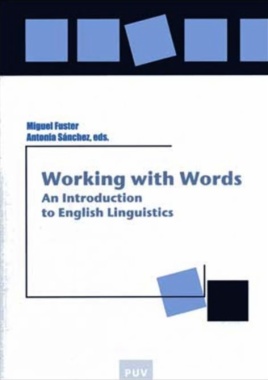Aquest volum intenta oferir als estudiants matriculats en el Grau d'Estudis Anglesos un manual de base que els introduïsca en l'estudi de les principals matèries. Un manual amb materials pràctics de treball i continguts que responen a les necessitats d'una contínua actualització de l'ensenyament de llengües estrangeres en una perspectiva empírica i teòrica, i que al mateix temps recull i integra els principals corrents científics dels estudis anglesos, tenint en compte les directrius introduïdes per l'Espai Europeu d'Educació Superior. La novetat d'aquest manual resideix a oferir a la xarxa i a la disposició de qualsevol usuari informació relacionada amb el contingut del llibre; textos, exercicis autocorrectius i activitats. Un espai que convida els usuaris a participar enviant les seves propostes per a publicar-les i poder-les compartir.
- Cover page
- Title page
- Copyright page
- Index
- Preface
- 1. English Phonology
- 1.1 Introduction: Received Pronunciation
- 1.2 The articulatory organs
- 1.3 English Phonemes
- 1.4 Vowels
- 1.5 Consonants
- 1.6 Connected speech
- 1.7 Prosody
- 1.8 Recommended Bibliography and Web Links
- 1.9 Test your knowledge
- 2. English Lexicology
- 2.1 English lexicology
- 2.2 Problems with the term “word” in linguistic analysis
- 2.3 Word typologies
- 2.4 Morphology and the morpheme concept
- 2.5 Morphemic analysis
- 2.6 English (allo)morphs
- 2.7 Major word-formation processes
- 2.8 Other types
- 2.9. English phraseology
- 2.10 The source of Modern English words
- 2.11 Recommended Bibliography and Web Links
- 2.12 Test your knowledge
- 3. English Grammar
- 3.1 What is grammar
- 3.2 Preliminaries: some basic concepts
- 3.3 Nouns and noun phrases
- 3.4 Determiners and Pronouns
- 3.5 Adjectives and adjective phrases
- 3.6 Prepositions and prepositional phrases
- 3.7 Verbs and verb phrases
- 3.8 Adverbs and adverb phrases
- 3.9 Conjunctions, interjections and other minor word classes
- 3.10 Sentence and clause structure
- 3.11 Syntactic functions of clause elements
- 3.12. Discourse and grammar
- 3.13 Recommended Bibliography and Web Links
- 3.14 Test your knowledge
- 4. Semantics
- 4.1 General Introduction to Semantics
- 4.2 Lexical Semantics
- 4.3 Contextual variation of word meaning: Polysemy
- 4.4 Word meanings and concepts
- 4.5 Sense relations of inclusion and identity: hyponymy, meronymy and synonymy
- 4.6 Relations of exclusion and opposition
- 4.7 Cognitive Semantics: Extensions of meaning
- 4.8 Grammatical Semantics: Compositionality
- 4.9 Recommended Bibliography and Web Links
- 4.10 Test your knowledge
- 5. The history of the English Language
- 5.1 Introducing the history of English
- 5.2 Periods in the history of English: Old, Middle and Modern English
- 5.3 Pre-Old English: From Indo-European to Old English
- 5.4 The Old English (OE) period
- 5.5 The Middle English (ME) period
- 5.6 The Modern English (ModE) period
- 5.7 The Present-Day English (PDE) period
- 5.8 Concluding remarks
- 5.9 Recommended Bibliography and Web Links
- 5.10 Test your knowledge
- 6. Discourse and text analysis
- 6.1 What is Discourse/Text?
- 6.2 Discourse analysis and linguistics
- 6.3 Discourse analytical approaches and applications
- 6.4 Recommended Bibliography and Web Links
- 6.5 Test your knowledge
- 7. English Sociolinguistics
- 7.1 Origins and definition of sociolinguistics
- 7.2 Directions in sociolinguistics
- 7.3 Sociological objectives
- 7.4 Sociological and linguistic objectives
- 7.5 Linguistic objectives
- 7.6 Recommended Bibliography and Web Links
- 7.7 Test your knowledge
- 8. Translation
- 8.1 Introduction to translation studies
- 8.2 A short history of translation
- 8.3 Translation in practice
- 8.4 Concluding remarks
- 8.5 On your own: a practical exercise
- 8.6 Recommended Bibliography and Web Links
- 8.7 Test your knowledge
- 9. Second Language Acquisition
- 9.1 Child Language Acquisition
- 9.2 Second Language Acquisition
- 9.3 Factors which infl uence SLA
- 9.4 Methodology in SLA
- 9.5 Some remarks about learning English
- 9.6 Recommended Books and Web Links
- 9.7 Test your Knowledge
- List of Abbreviations
- References

